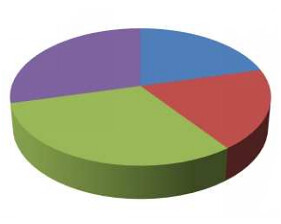Carbon Group Post 2: What
About the Data?
This is the second in
a planned series of blog posts on topics that are discussed in depth in the SEI Sustainability
Committee’s forthcoming technical report, Building Structure and Global
Climate, due out later this year.
As with all analyses, the quality of environmental
assessment results depends greatly on the quality of the input data. What we
learned in our earliest structural engineering and computer programming courses
holds true: garbage in = garbage out. When it comes to environmental analyses
of our structures, no matter the level of detail of the analysis—carbon dioxide
equivalent footprint (carbon footprint), life-cycle inventory, or life-cycle
analysis (LCA)—quality input data is important to achieve credible, verifiable,
and consistent results.
Uncertainty in analyses related to data quality and
variability is important enough that an entire chapter of the SEI Sustainability Committee’s
forthcoming technical report is devoted to the topic. In this post, I’ll
highlight the key questions to ask related to data when evaluating a carbon
footprint.
Data quality and
variability
When performing a carbon footprint, data typically can be
taken from a few different types of sources:
·
Public databases
·
Private databases
·
Primary data
A public database is usually managed by an association or a
public or private institution. In the U.S., one public database is the U.S. LCI
database and it is managed by NREL. Private
databases can belong to large consulting firms that have performed multiple
LCAs or software companies. Lastly, primary data can be obtained directly from product
manufacturers. These data are the most applicable to the analysis, yet they are
typically the most time consuming and expensive to get. In all cases, data for
use in carbon footprint studies includes quantities of materials and energy
that go into the system boundary being studied, and emissions to land, water,
and air that come out of the system boundary.
Regardless of the source, data used in carbon footprints
should be accompanied by evaluations of data quality and variability. Unfortunately,
most LCI datasets do not include statistical variability. Information such as
standard deviation and statistical distribution can be useful when evaluating
or comparing carbon footprints. When evaluating an LCA report or EPD, research
whether average data from public or private databases is representative of the industry.
Keep relative uncertainty and statistical significance in mind when using data
and results. Another way to check reliability of results is to request
uncertainty/variability information from suppliers and trade organizations.
Data quality guidance is given in ISO standard 14044, Environmental
Management-Life Cycle Assessment-Requirements and Guidelines. Typical
factors that are addressed include: the timeliness, geographic and technical
relevance, precision, completeness, representativeness, consistency,
reproducibility, sources, and uncertainty of the information (for example,
data, models, and assumptions).
This brief introduction to data quality and variability for
carbon footprints will hopefully give you some indicators to look for the next
time you read one of these studies.














